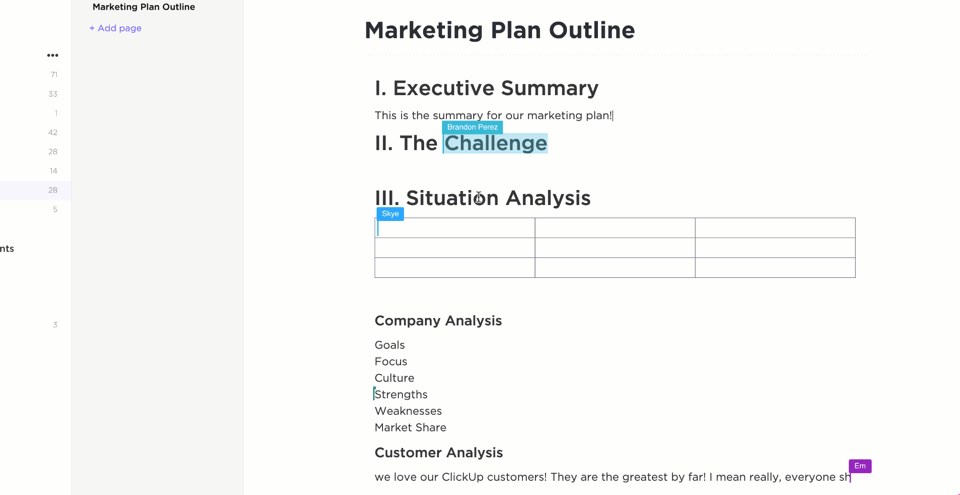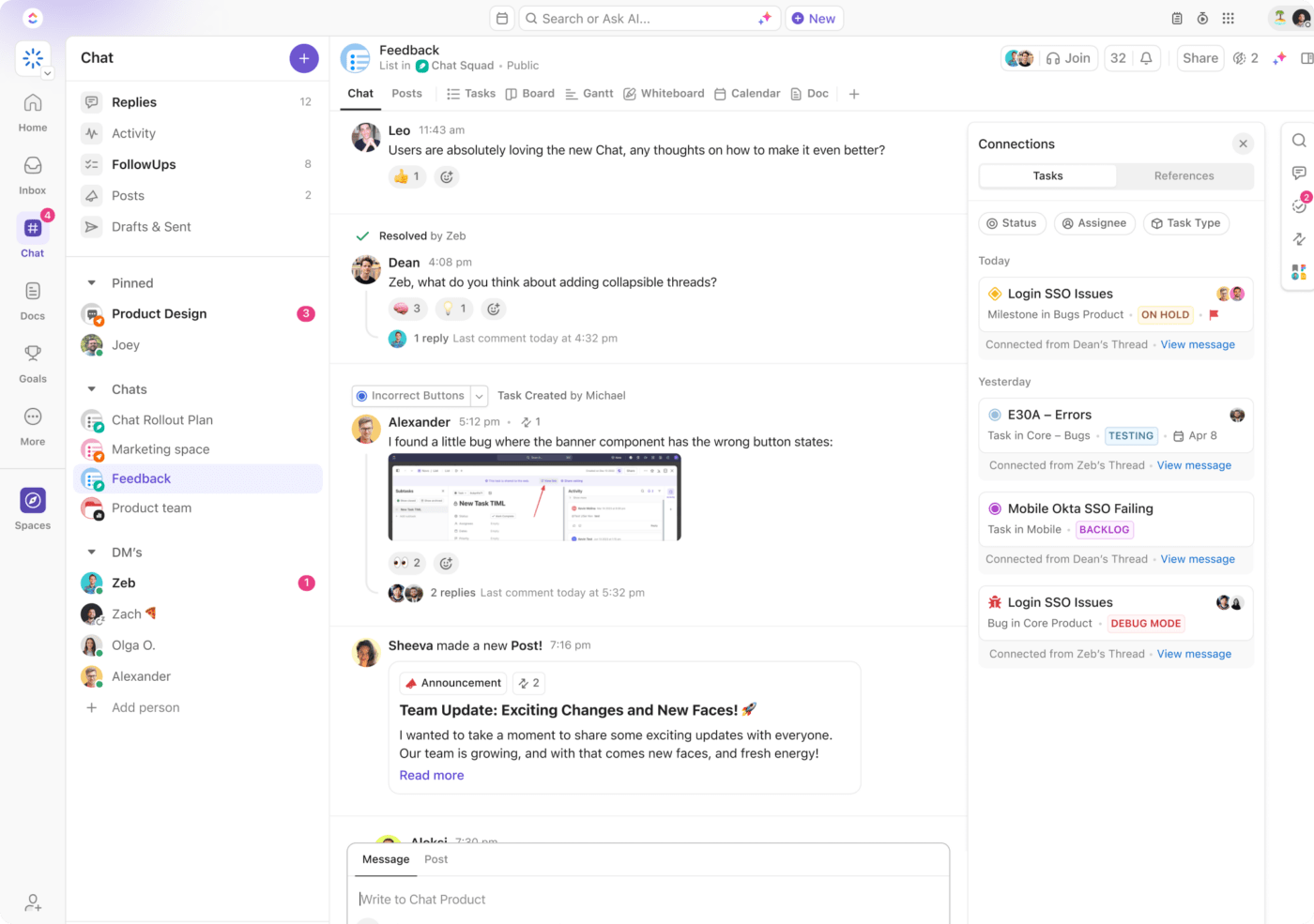How to Apply the People, Process, Technology (PPT) Framework

Sorry, there were no results found for “”
Sorry, there were no results found for “”
Sorry, there were no results found for “”
The world of business is at the crossroads of several pivotal developments. The pandemic changed the way we see work—remote and hybrid models became mainstream. Artificial intelligence has reached a practical level of maturity with GenAI. Technology has become an even more integral part of businesses.
As a result, organizations across the globe are in a state of constant digital transformation. It’s no wonder that the digital transformation market is projected to reach $4907 billion by 2030.
Yet, it’s important to note that digital transformation is not just about adopting new technologies. It represents a fundamental change in the role technology plays in business. It’s an organizational transformation that demands the reimagining of business operations, streamlining processes, and changing behaviors to deliver value in the marketplace.
The People Process Technology (PPT) framework is designed to enable exactly that. PPT takes a holistic approach to digital transformation, going beyond technology. In fact, in PPT, tech comes last!
If you’re curious about how the PPT model can help you achieve your strategic digital transformation goals, read on.
The People, Process, Technology (PPT) framework is a model for assessing and improving organizational effectiveness. It focuses on three key elements.
🧑🏻 People: The human resources within your organization, including employees, contractors, and stakeholders. This part of the framework emphasizes skills, knowledge, roles, responsibilities, and culture.
➡️ Process: Workflows, procedures, and methods you use to run the businesses. This includes the formal and informal processes, ranging from leave application to quality control.
🛠️ Technology: The tools, systems, and infrastructure that support successful business operations. This includes software, hardware, and other technical resources.
Though digital transformation gained ground in the 2000s, the PPT framework has its history in management psychologist Harold Leavitt’s model from 1965. Leavitt’s Diamond model focused on four key components: people, tasks, structure, and technology.
According to Leavitt, these elements are interconnected, and changes in one area will inevitably impact the others. Over time, the Diamond model evolved, with the “structure” and “tasks” components being reinterpreted or merged into what we now refer to as “processes.”
This shift reflected a growing recognition of the need to formalize and optimize workflows as technology became more integrated into business practices. This is especially true when it comes to an organization’s digital transformation strategy.
Remember that the people process technology framework is about more than these three elements alone; it is also about their interconnectedness and interactions.
For instance, it is not just about the project management tool the organization pays for but also how the teams use it and how it shapes their performance.
We’ll explore that next.
Uber, the world’s largest taxi company, owns no vehicles. Facebook, the world’s most popular media owner, creates no content. Alibaba, the most valuable retailer, has no inventory. And Airbnb, the world’s largest accommodation provider, owns no real estate. Something interesting is happening.
This change in the business world also creates a new interplay between the aspects of people, processes, and technology. Here’s how.
People are the heart of any digital transformation initiative. Their knowledge, skills, creativity, passion, and leadership execute and sustain the change.
Their ability to follow processes can lead to efficiencies, speed, consistency, and compliance. On the other hand, if they are reluctant to use technology, they might miss out on easier, faster, more convenient ways to work.
Engaged employees understand the intent of the process and follow it judiciously. They are better equipped to leverage technology effectively, leading to a more agile and responsive organization.
Processes refer to the way the people in an organization execute change. It encompasses workflows, procedures, and methods followed by the people. This could be anything from dealing with an agitated customer to writing thoughtful responses to letters from seven-year-olds.
Well-designed processes ensure that operations are efficient, scalable, and aligned with the company’s strategic goals. They help people deliver consistent work, often reducing decision fatigue. They also help technology teams standardize and automate processes to improve productivity.
Technology includes the tools, systems, and infrastructure used in the organization. This could be anything from software and hardware to data management systems and communication platforms.
The technology we use shapes the way we think. When all you see is a spreadsheet, you’re bound to think in rows and columns. By choosing the right technology, you can either empower or hinder employee performance. Likewise, you can also improve or complicate processes.
Every day, people, processes, and technology interact with each other in myriad ways. What we know is that an optimal interaction of the three can create extraordinary outcomes.
Let’s see how you can facilitate that.
The simplicity of the PPT framework can often mask its intricate fabric. Any organization would be amiss to ignore the dozens, if not hundreds, of ways the three elements interact and impact one other.
Leveraging the PPT framework as part of any project management or digital transformation strategy needs a considered approach. Here’s a step-by-step guide using a project management system like ClickUp.
If that seems like a humungous task, it is. So, begin by outlining the scope of your project. For example, as part of your digital transformation initiative, if you’re implementing a testing automation tool, here’s what you could do:
People: Think about all the stakeholders of the tool, not just its direct users. This could include business analysts, developers, DevOps, customer service teams, etc.
Process: Map the current testing processes you’re following. Identify gaps and critical junctures.
Technology: While testing automation is a whole new tool you don’t yet have, think of all the tech you use in the process. You might be using a bug-tracking system, for instance. Or just listing defects in a spreadsheet. Audit all of them, even if they seem tangential.

Use a process mapping tool like ClickUp Whiteboards to make this visual and collaborative. Bring various stakeholders on the same page, discuss elements, leave comments, address concerns, and take action, all in one place.
⚡️ Template Archive: For beginners, here are some process map templates to save you from the horrors of a blank page.
Apple’s exemplary product development process demonstrates the deft interplay between people, processes, and technology. As a philosophy, Apple tightly integrates hardware, software, and services for better quality control and UX.
To achieve this, they hire top engineering talent, cultivate a culture of design excellence, and invest in advanced manufacturing techniques, creating a seamless ecosystem within the organization.
For your digital transformation project, have a clear vision. Set specific business objectives and success metrics for each of the three elements: people, process, and technology.

Document your vision as a handbook or a project charter with ClickUp Docs. Leverage the AI capabilities of ClickUp Brain to summarize it, create tasks, notify users, etc.
Successful transformation requires balanced investment across people, processes, and technology. Allocate resources thoughtfully, avoiding over-investment in one area at the expense of others, as the consequences can be catastrophic.
🚫 Overemphasis on technology: Prioritizing technology over people and processes can lead to complex systems that employees are not very fond of using or processes that do not align with the technology.
This can result in underutilized tools, staff resistance, and ultimately, a poor return on investment.
For instance, if you implement a complex customer relationship management (CRM) tool and your sales teams hate it, forcing them to use it will not produce the results you seek.
To avoid this, invest in training your employees on any new technology you implement. Align technology with the actual needs and capabilities of the organization’s workforce.
🚫 Overemphasis on people: Focusing heavily on the people aspect without corresponding attention to processes and technology can result in inconsistent outcomes, inefficiencies, and a lack of scalability. Employees might create processes that are convenient to only them or perform too many manual tasks, leading to burnout.
Avoid this by balancing the focus on people with well-defined processes and the right technology tools that help achieve organizational efficiency and consistency.

For instance, use ClickUp Automations to reduce manual workloads and time spent on routine, mechanical tasks.
Don’t know where to start? We’ve brought help. Check out business process automation examples to help streamline your processes.
🚫 Overemphasis on process: Focusing disproportionately on processes can lead to rigidity, where employees feel constrained instead of empowered. Processes that are overly complex or unsupported by the right technology can create frustration.
So, review and update processes regularly to ensure they are flexible and aligned with people’s capabilities and technological advancements. Use process improvement templates to determine where there is room for improvement and execute accordingly. Actively seek employee feedback to refine processes.
🚫 Underinvestment in any one area: Neglecting any aspect of the PPT framework can lead to a breakdown of the entire system.
For example, underinvestment in technology can lead to outdated tools, while underinvestment in people can result in a skills gap.
Maintain a balanced approach by regularly assessing and adjusting investments in all three areas. This doesn’t mean you must give all equal importance.
Based on maturity, needs, budgets, culture, etc., one element might need more attention than the other. Ensure each element receives the necessary resources and attention to support the others effectively.
🚫 Lack of integration across PPT elements: If you don’t integrate people, processes, and technology effectively, it can result in disjointed operations, communication failures, and a lack of alignment with your objectives. This fragmentation can slow down decision-making and reduce overall effectiveness.
Foster meaningful integration by encouraging cross-functional collaboration. Ensure that changes in one area (e.g., technology upgrades) are communicated and aligned with processes and people. Use regular reviews to assess how well-integrated these elements are and make adjustments as needed.
To protect yourself from being swayed by the tides of the project, create a plan upfront.
ClickUp’s Digital Transformation Strategy and Plan Template can be incredibly useful here. This beginner-friendly template helps you map out your goals, break them into manageable action items, and track progress toward successful implementation.
Digital transformation projects are, in essence, about change. Even the best-intentioned changes are disruptive. So, a certain amount of resistance from team members is natural. Create a robust change management strategy to get ahead of this.
✅ Educate: Invest in knowledge management. Create a comprehensive change management guide before changing existing processes. Prepare, support, and guide individuals and teams through the transformation.
✅ Enable: Use change management software to involve stakeholders early in the process. Offer training and support, explain the next steps, and encourage them to actively adopt the new digital technology solutions.
✅ Operationalize: Based on your experience, create change management templates that can be applied to future projects or other teams.
Netflix’s change management strategy during its transition to streaming is a great example. The company invested in ensuring their teams had the skills and mindset to support the move from DVD rentals to streaming.
They re-engineered their content delivery processes, streaming experience, and content recommendation algorithms and created a culture of data-driven decision-making.
As a result, Netflix pioneered a whole new way of media consumption and successfully transformed itself into the world’s leading streaming service.
When implementing digital transformation projects, communicating once initially is not enough. You need to maintain ongoing conversations with every stakeholder to reiterate the purpose, foster alignment, and improve adoption.
Enable real-time collaboration software like ClickUp Chat to facilitate asynchronous conversations. This not only eliminates the need for meetings/disruptions but also enables a common forum for team members to collaborate effortlessly.

The success of the PPT Framework lies in treating people, processes, and technology as interconnected elements. This means that any change you make to one will most certainly impact the other two.
Implementing a structured business process management strategy can help you prepare for upstream/downstream impact. Check out these business process management examples to stroke inspiration.
Digital transformation isn’t a one-and-done thing, especially not in a world where technology is evolving so rapidly. Use the PPT framework as an evolving system. Review and refine the framework as you gain more information.
Foster a culture of continuous improvement, actively address feedback, and optimize all aspects of the business.
Toyota’s culture of continuous improvement (Kaizen) is a standout example.
Today, Toyota is one of the most efficient and profitable automotive manufacturers in the world. And the Toyota Production System is adopted globally across industries.
Change is inevitable. Resilient organizations not only adapt well to change but actively embrace its opportunities.
They build strengths across people, processes, and technology to evolve in tandem with the market’s headwinds. They manage the interconnectedness of these three elements with ease, balancing the needs of each element and stepping in to fill in gaps as circumstances change.
Organizations built to last are always on the lookout for ways to improve efficiency, foster innovation, and navigate change more effectively.
They use a comprehensive suite of business tools to create this resilience. A suite of tools like ClickUp.
With features supporting project management, scheduling, reporting, resource allocation, and time tracking, as well as creative brainstorming, real-time collaboration, and more, ClickUp has everything an enterprise needs for digital transformation.
© 2026 ClickUp